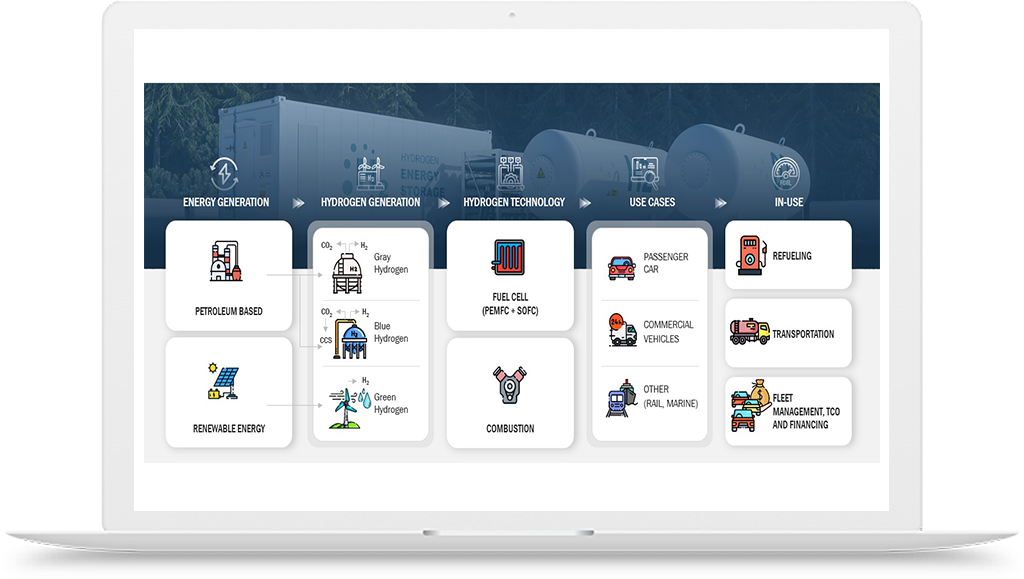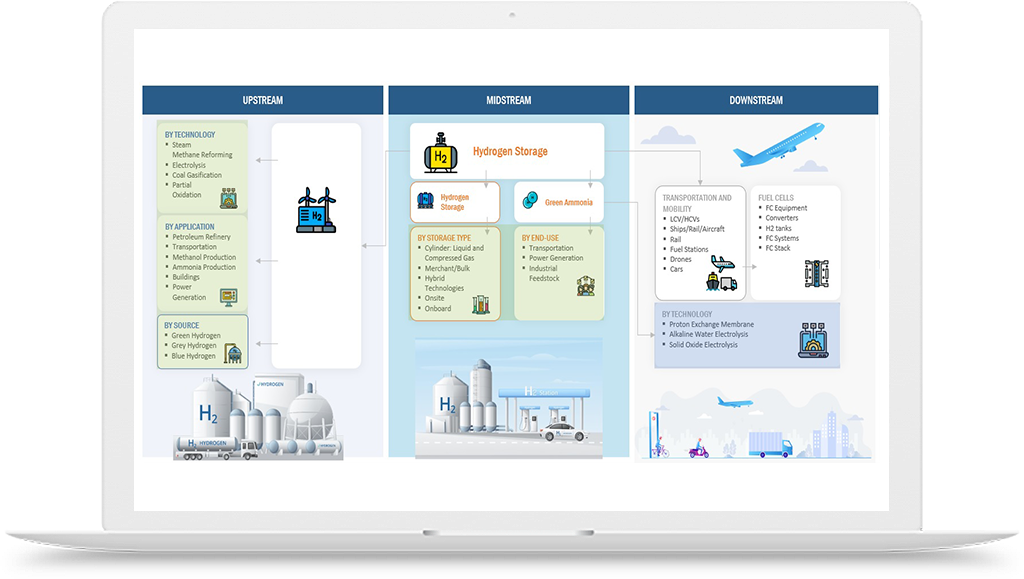Green Hydrogen Industry Challenges
Scaling up green hydrogen (GH) faces several significant challenges that need to be addressed for its widespread adoption. These Green Hydrogen Industry Challenges include technology readiness and cost, infrastructure development, market off-takers, financing, supply chain bottlenecks, and policy frameworks.
Growing the green hydrogen industry is a feasible means of addressing the global energy transition to a more sustainable future. Green hydrogen is an energy carrier that is clean and flexible, utilizing renewable energy sources for electrolysis. It can replace traditional hydrogen manufacturing procedures with carbon-neutral alternatives.
Let's explore each of these challenges in more detail:
Technology Readiness and Cost:
Leading the way in the global energy revolution is the green hydrogen industry, which uses renewable energy sources to provide a sustainable alternative. The evaluation of technology readiness and cost becomes critical to the industry's performance when it develops traction and is widely used. This essay delves into the difficulties related to cost and technological readiness in the green hydrogen business, highlighting the critical role these elements will play in determining the direction the sector takes.
- Electrolysis Efficiency: The most important challenge form Green Hydrogen Industry Challenges are electrolysis efficiency. Electrolysis, the process of producing hydrogen from water, requires efficient and cost-effective electrolyzes. Advancements in electrolyzes technologies are needed to improve efficiency, durability, and reduce capital costs.
- Fuel Cell Efficiency: Fuel cells, which convert hydrogen into electricity, play a vital role in GH applications. Improving fuel cell efficiency can enhance the overall performance and cost-effectiveness of GH systems.
- Cost Reduction: The cost of GH production, primarily through electrolysis, needs to be reduced to compete with conventional fuels. This requires advancements in technology, economies of scale, and the utilization of low-cost renewable energy sources.
- Technology Readiness Levels (TRL): Technology readiness is a key determinant of the successful deployment of green hydrogen solutions. The Green Hydrogen Industry faces challenges in advancing technologies from lower TRLs to higher, ensuring that innovations move seamlessly from the laboratory to practical, scalable applications.
- Policy support and market competitiveness: Conventional hydrogen generation techniques, which can have pre-existing infrastructures and less upfront expenditures, pose a threat to green hydrogen. Strong measures promoting green hydrogen's market competitiveness are required to encourage its adoption. States Authorities.
Infrastructure Development:
With the world energy scene moving toward sustainability, the Green Hydrogen Industry is becoming a game-changer. But the creation of a strong infrastructure is necessary before green hydrogen can be produced and used. This essay explores the Green Hydrogen Industry Challenges faces in developing infrastructure while highlighting the critical role that infrastructure development plays in moving toward a sustainable energy future.
- Production Facilities: In order to scale up GH, large-scale hydrogen production facilities, such as electrolyzes run by renewable energy, must be established. To increase production capacity and provide a consistent and affordable supply of GH, investments are required.
- Distribution and Storage: To transport and store hydrogen, the GH infrastructure consists of a strong distribution network and storage facilities. Wider use of GH depends on building hydrogen refueling stations, expanding the pipeline network, and putting effective storage systems in place.
- Adapting Current Infrastructure: There are difficulties in retrofitting current infrastructure to support the generation and distribution of green hydrogen. It takes meticulous planning and money to upgrade storage systems, pipelines, and facilities.
Green Hydrogen Market Off-takers:
The Green Hydrogen Sector has attracted a lot of interest as a major actor in the shift to clean and sustainable energy sources. The importance of market off-takers' involvement is growing as the business picks up steam. For the market to flourish sustainably, these off-takers—entities that buy green hydrogen for a variety of applications—face obstacles that must be overcome. In this piece, we examine the Green Hydrogen Industry Challenges participants and discuss how resolving these issues is essential to the development of the sector.
- Creation of Demand: The market's growth depends on the creation of a significant demand for GH. Market demand can be increased by involving important players in industries including transportation, manufacturing, and electricity production and by offering incentives for GH adoption.
- Customer Acceptance: Market participants must be persuaded of the advantages and sustainability of GH. Building trust and encouraging client acceptance can be achieved by showcasing the GH technologies' dependability, effectiveness, and environmental benefits.
Financing and Investment:
A ray of hope in the global shift to sustainable energy is the Green Hydrogen Industry. Its success is largely dependent on obtaining significant funding and investment. The present discourse delves into the pivotal function of funding and investment in the Green Hydrogen Sector, scrutinizing the existing terrain, obstacles, and the revolutionary influence that these financial instruments can exert on the sector's expansion.
- Capital Intensive: GH scaling necessitates large infrastructure and technology implementation expenses. Capital-intensive obstacles can be addressed by luring in both public and private investment, offering financial incentives, and creating creative financing schemes.
- Cost Reduction Pathways: By reassuring investors of the long-term viability and competitiveness of GH technologies, clear cost reduction pathways supported by focused research and development efforts can promote investment.
Supply Chain Bottlenecks:
Supply chain bottlenecks are a major Green Hydrogen Industry Challenges as it gains traction as a major participant in the global shift to sustainable energy. A complicated supply chain must run smoothly for green hydrogen generation and distribution to be successful. The present discourse delves into the difficulties presented by supply chain obstructions in the Green Hydrogen Sector and looks at possible remedies to guarantee the industry's continued expansion.
- Raw Materials: GH production requires the availability and sourcing of certain raw materials, such as catalysts for electrolysis and renewable energy sources, which can present supply chain difficulties. Creating sustainable and varied supply networks is crucial.
- Equipment and Components: To prevent bottlenecks and enable scaling up, it is imperative to provide a sufficient supply of essential equipment, components, and infrastructure for GH systems, including as fuel cells and electrolyzes.
Policy Framework:
The green hydrogen industry, which provides a flexible and clean substitute for conventional hydrogen production techniques, has grown to become a major force in the global search for sustainable energy alternatives. The necessity of clear and encouraging policy frameworks is fundamental to the industry's success. The importance of legislative frameworks in developing the green hydrogen industry is discussed in this article, along with how they affect investment, innovation, and the shift to a low-carbon future.
- Supportive Policies: Governments are essential in establishing the conditions necessary for GH scaling. Encouraging investments and promoting the adoption of GH can be achieved by the establishment of supportive policies, regulations, and market frameworks that include long-term targets, financial incentives, and carbon pricing mechanisms.
- International Collaboration: Global market expansion and supply chain resilience can be ensured by harmonizing laws and regulations at the international level, which can promote cross-border trade and cooperation in GH technologies.
Governments, industrial players, and research institutions must work together to address these issues in order to promote innovation, create laws that will help, and obtain funding. Green hydrogen's (GH) transformation to a sustainable and affordable energy source will happen more quickly if certain Green Hydrogen Industry Challenges are overcome.
















